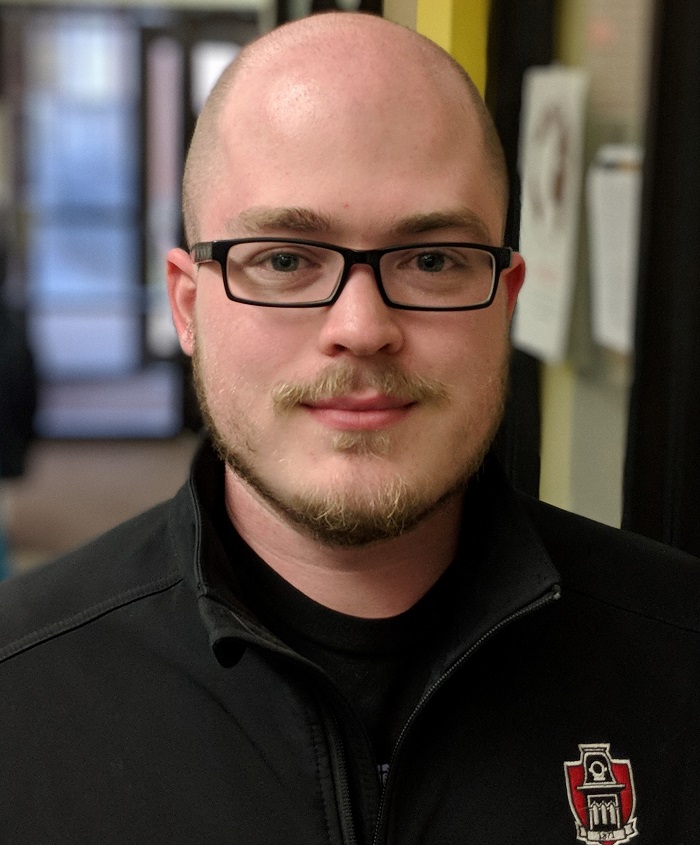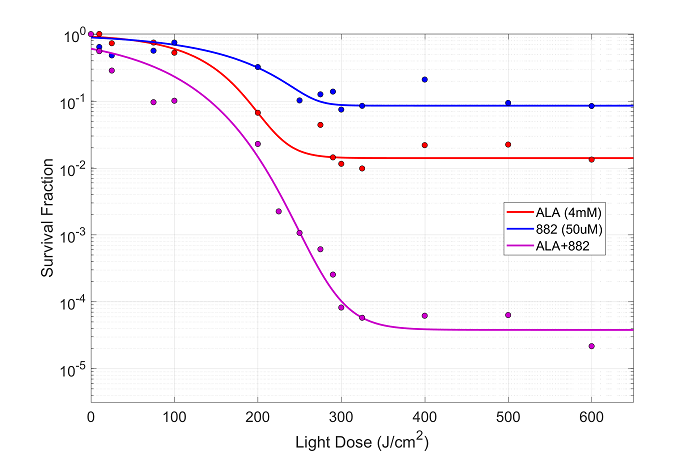Alec Walter
|
|
Name |
Alec Walter - [ Pubs ] |
|
|
Adviser |
|||
|
|
|||
|
CV |
|||
|
Areas of Research |
Photodynamic Therapy Microbiology Infectious Disease |
||
|
Project Summary |
Collaborators: Eric Skaar, Vanderbilt University Medical Center Mingfeng Bai, Vanderbilt University Institute of Imaging Science, Vanderbilt University Medical Center |
||


 A potential treatment that is being explored to treat SSTIs is antimicrobial photodynamic therapy (aPDT) which kills bacteria by producing cytotoxic reactive oxygen species from a photosensitive molecule and wavelengths of light that the photosensitizer can absorb. Previous work from the Skaar Lab at Vanderbilt University Medical Center has shown that gram-positive bacteria can be specifically photosensitized by inducing an accumulation of the endogenous photosensitive porphyrin, coproporphyrin III (CPIII), through the administration of a small-molecule activator ('882) of the gram-positive specific enzyme coproporphyrinogen oxidase. While the phototoxic effects of CPIII are most pronounced when stimulated with 395nm light, corresponding to the peak absorption of its Soret band, blue light at this wavelength only has a penetration depth of up to 150μm in the skin. If the applied light attenuates to levels below what is required to trigger ROS production before fully reaching the infection, a multiple orders of magnitude decrease in the treatment efficacy can occur. Our current approach to solving this issue of depth is to utilize wavelengths of light that target the secondary absorption peaks, the Q-bands, of CPIII which are found at 498nm, 530nm, 565nm, and 619nm. As these red-shifted wavelengths have greater penetration depths, ranging from 440μm to 720μm, they would be able to reach infections located deeper in the skin. We hypothesize that the addition of Q-band targeted light in CPIII photodynamic therapy will result in an increase in the efficacy of the treatment such that the resulting bacterial burden is comparable to treating with topical antibiotics.
A potential treatment that is being explored to treat SSTIs is antimicrobial photodynamic therapy (aPDT) which kills bacteria by producing cytotoxic reactive oxygen species from a photosensitive molecule and wavelengths of light that the photosensitizer can absorb. Previous work from the Skaar Lab at Vanderbilt University Medical Center has shown that gram-positive bacteria can be specifically photosensitized by inducing an accumulation of the endogenous photosensitive porphyrin, coproporphyrin III (CPIII), through the administration of a small-molecule activator ('882) of the gram-positive specific enzyme coproporphyrinogen oxidase. While the phototoxic effects of CPIII are most pronounced when stimulated with 395nm light, corresponding to the peak absorption of its Soret band, blue light at this wavelength only has a penetration depth of up to 150μm in the skin. If the applied light attenuates to levels below what is required to trigger ROS production before fully reaching the infection, a multiple orders of magnitude decrease in the treatment efficacy can occur. Our current approach to solving this issue of depth is to utilize wavelengths of light that target the secondary absorption peaks, the Q-bands, of CPIII which are found at 498nm, 530nm, 565nm, and 619nm. As these red-shifted wavelengths have greater penetration depths, ranging from 440μm to 720μm, they would be able to reach infections located deeper in the skin. We hypothesize that the addition of Q-band targeted light in CPIII photodynamic therapy will result in an increase in the efficacy of the treatment such that the resulting bacterial burden is comparable to treating with topical antibiotics.